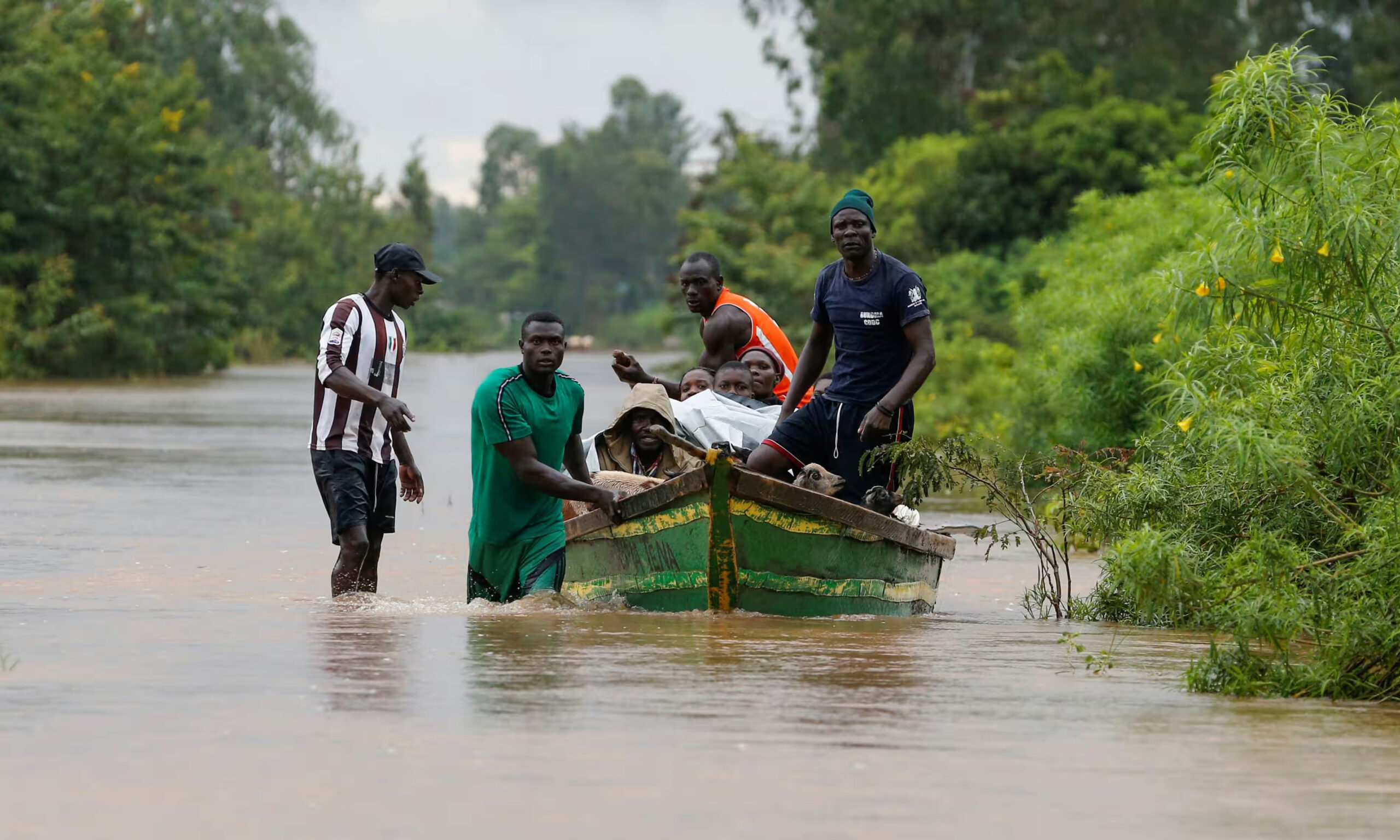In Orongo village, the household of Mr Okedo, an ailing 85year-old man, swims in sight of danger as floods surround their mud thatched house.
‘’On a Tuesday morning while i collected flood response materials as part of a youth drive, I received a call from a resident in Orongo, who was concerned as the floods had escalated, houses submerged and there was need for quick rescue,’’Ogalo narrates
Lake Victoria has a drainage area of 183,000 square km, covering half of East Africa and more. The lake is a source of River Nile, and it is fed by 23 rivers amongst tributaries.
80% of the lake’s water is directly sourced from rainfall, which means the amount of rainfall regulates the amount of water in the lake.
The lake is currently bulging out and breaking its banks into the Orongo community, with half of the village already submerged in water. As per MET and Kenya Red Cross, alerts have been issued notifying residents that they may continue to experience heavy rains, and lake backflow around their region.
For the past weeks Kenya has experienced torrential rains which have caused devastating floods, leading to more than 200 deaths, displacement and school destruction along with other properties.
According to the United Nations report,the heavy rains began in March, killing more than 100 people across the country. The report highlights that this season’s flash flooding follows similarly heavy rains that began late last year, affecting almost 600,000 people.
In Uganda’s Kasenyi fish landing site, one has to wear protective gear as the water has taken over the once busy fish trade point.
And for business women like Nanoozi Resty, who operates a fish restaurant at the landing site, life has become unbearable.
‘’ Apart from the increasing fish prices, when it floods you have to pay the fishmongers to carry you, and help save your business, it’s extremely challenging,’’ she tells
Herbert Ssenoga, a fish monger on kasenyi landing site blames the rising water levels on the greedy rich traders that purchase land and construct in wetlands.
‘’ The wetlands which store water have been drained and sky scrapers mounted, and the water ends up flowing back to the lake,’’ he explains
The Uganda National Meteorological Authority manager George William Omony, reveals that the water level is likely to keep rising due to excess rains.
‘’According to the data collected on Lake Victoria’s water level alterations by Ministry of Water and Environment, the water levels are likely to keep increasing, but other factors like wetland depletion are also contributory, he says
One great concern by residents is the neglect by humanitarian organizations and government both local and national who have not been seen within the locality to assess the situation or provide support.
‘’We have so far spotted three pythons roaming around the submerged houses and we are all scared for our lives,’’ Obonyo, a small-scale farmer notes
Orongo residents say that, displaced individuals who were initially provided shelters in schools were moved out to allow the school opening and were forced to seek shelter in homes that are at risk of flooding.
HOLISTIC APPROACH
According to Research gate reports, Lake Victoria water levels over the 104 years have exhibited shocking changes, and often times are unpredictable. Currently heavy rainfall has caused water levels above historical record in the Trans boundary freshwater lake leading to destructive flooding.
The flooding in neighboring communities has raised specter of climate migration.
The residents are calling out the government, well-wishers and leaders to come to their rescue during these trying moments but in vain.
To minimize the effects of the flooding Christine Akinyi, an environmental and Climate Action officer at Jijenge youth organization, recommends developing measures such as early warning weather alerts.
‘’Weather predictions and early warnings are crucial for preparing long-term adaptation plans, ensuring communities are better equipped to handle the impact of extreme weather events,’’ she suggests
